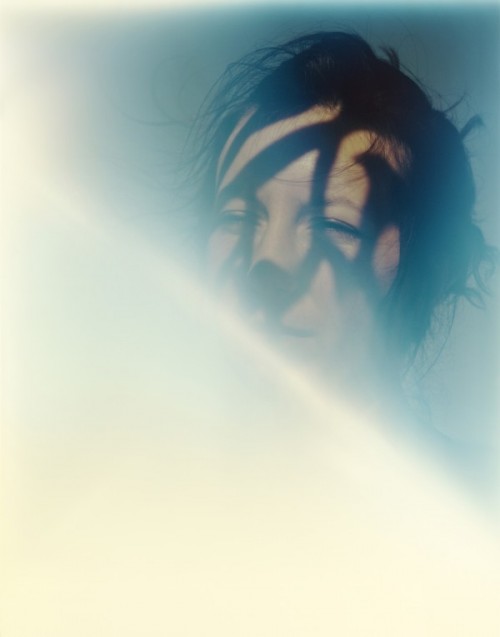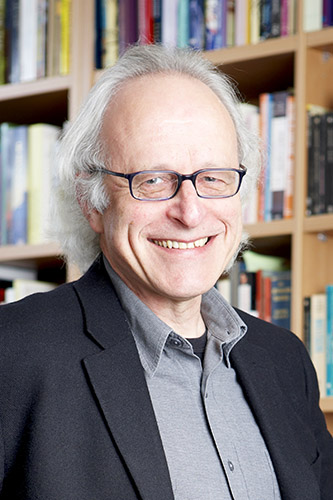
It’s always interesting, when you have a big investment in the performance of literary titles in the marketplace, to see how completely, and constantly, the marketplace disappoints your expectations. The current craze for adult colouring books is a good example. Books for adults to colour in! Books without words! What a relief!
In fact, they tell you it is the role of these colouring-in books to provide relief from stress, and not just stress caused by words, but by thinking as well. One of the top-sellers in the field, The Mindfulness Colouring Book: Anti-stress art therapy for busy people (2015), explains the first word in its title in the following terms: ‘Being mindful is about paying attention to the present moment, clearing your mind of distractions, and focusing on simply being.’ Its author, Emma Farrarons, describes the attitude appropriate to colouring-in books in her blog:
I’m in the moment … Maybe it’s a feeling of childhood nostalgia, spending a day filling in scenes, choosing the next colouring pencil … hours free from thought.
‘Mindfulness’ is a widely used concept in self-help literature, though it might seem to have travelled far from its Buddhist origins by the time it gets to colouring-in books. Stephanie Dowrick made much of it in Seeking the Sacred (2010). The term owes its current vogue to the authority of the Professor of Clinical Psychology at the University of Oxford, Mark Williams, who has published a number of books on the use of what he calls Mindfulness-based Cognitive Therapy (MBCT), including, most recently, Mindfulness: Finding Peace in a Frantic World (2012). It’s a clever marketing strategy to apply an already-popular term from the self-help genre to this suddenly burgeoning genre of the adult colouring-in book. It gives a bit of weight to what some might think of as a mindless activity.
But I am prepared to believe what they say about the curative properties of colouring in. I have been careful to think about the matter, not during of course, but after my return from the absorption required for colouring between the lines drawn by someone else, and I have come to the conclusion that the craze is a good thing, and we should spend the time we might have used for reading on colouring-in. As the lizard said to the poet John Shaw Neilson, ‘Away with the homage to Reason! / We live by the folly of Spring!’ Note that spring in this case isn’t youth, it’s childhood. According to the Sydney Morning Herald, ‘grown-ups around the world are delighting in the chance to sit down with a box of pencils and a book of illustrations and remember what it’s like to be five’.
This is no exaggeration. The most popular adult colouring book, Johanna Basford’s Secret Garden, has sold close to one and a half million copies worldwide since its publication early in 2013. In Australia, Basford’s follow-up title, Enchanted Forest, which came out at the beginning of 2015, has sold almost as many copies in its first six months of publication as Secret Garden has done since 2013, so the rush is really on. And they’re not just undiscerning book-buyers, in case you want to be snobbish about it. The Mindfulness Colouring Book recently topped the Readings bestseller list. The publishers claim that Basford’s books have been translated into 24 languages, with eleven more in the pipeline; Emma Farraron’s into fifteen languages. That’s quite an achievement for books that have hardly any words in them.
So there is the popularity of the genre to be taken into account, its broad appeal, and its therapeutic benefits. There is the added advantage, to the reader, of not only being able to stop the flow of time, by staying in the moment, but of reversing it altogether, and becoming a child again. From a literary point of view, it should be noted that the colouring-in genre lends itself to complex discriminations. Secret Garden and Enchanted Forest both make use of the quest motif, giving narrative import to the process of colouring-in. In Secret Garden, the features to be discovered in the luxuriant foliage of trees, vines and flowers that await the revelatory touch of the colour pencil, include sixteen bees, 63 beetles, two frogs, one shark, four keys, a padlock, and of course an eagerly awaited treasure chest. Enchanted Forest, which is an altogether more sophisticated book, now includes sixteen gargoyles and two unicorns, and a castle to mark the end of the quest. Here the Baroque elaboration of leaf and tendril rises to such a peak of intensity that two fold-out pages are required to accommodate the climax, two dragons of a resplendent and infinitely complicated majesty that emerge on a highly elaborated four-page spread once the castle gate has been opened. The creator must have got tired at this point, for the dragon on the right-hand pages, with its innumerable scales and relentless backdrop of floral embellishments, is simply a reversed version of the one on the left-hand pages. No such relief for the initiates however, who must colour their way to the inner- and outermost reaches of their creator’s world.
The Mindfulness Colouring Book is at the other extreme of the genre, for it completely eschews the temptations of narrative for a single-minded dedication to repetition. My guess is that these repeated patterns are intended as visual equivalents of the sense of being one achieves while colouring in.
In between these two generic extremes there are many other possibilities. There is the colouring book that is a travel memoir, allowing you to explore the recesses and undiscovered corners of a city, or a whole country, and to make its objects, its streets and buildings, its restaurants and temples, your own. Then there are the books in which, through a dedication to colouring by numbers, you bring a masterpiece to light from the tangle of shapes, a Da Vinci or a Warhol, and now you can claim credit for them too. This really unleashes your creativity. Other subjects include botanical drawings, historical scenes, labyrinths, animals, gardens, sneakers, celebrities and tattoos. It is hard to imagine an aspect of life that the genre might not accommodate.
But it is the spiritual aspect of the colouring book for adults that I am really taken with. I have been holding it back for last. The spiritual aspirations of the genre make the therapeutic claims for the mindfulness of colouring – its reduction of stress and anxiety – seem pallid by comparison. As you immerse yourself more and more fully into the endless proliferation of detail, and leave your cares and thoughts behind, you enter a world which is at first unremittingly black and white, and fossil-like in its frozen intricacy. Then, at the magic touch of your pencil, it stirs to life, becomes more and more colourful, until, after hours of mindfulness, you look over what you have done, and you see that you have created a paradise, redeemed the world from its fall into colourlessness, achieved an ecstatic vision. It’s better than a drug, better even than the enlightenment Marina Abramovic is now offering in Sydney to those who are prepared to count grains of rice and lentils in the name of Art – for that vision remains stubbornly monochromatic, no matter how carefully you separate the rice from the lentils.
In this way, by stressing the spiritual possibilities of colouring-in for adults, you guard against those who would take the opposite view, that the phenomenon plays on the infantilism of the reading public, and is a sign of the progressive devaluation of the significance of the book.
I would like to thank Ingrid Anderson from Gleebooks for her assistance on the subject of adult colouring-in books, and Walter Mason for the reference to Stephanie Dowrick.
This week Sydney Review of Books looks at two very different works of fiction. In ‘Moon Made of Cheese’, Jeff Sparrow reviews Seveneves, the latest tome by the celebrated science fiction writer Neal Stephenson. Seveneves, observes Sparrow, is ‘the hardest of hard science fiction, unflinchingly focused on technology as the species’ salvation’. But encoded in its apocalyptic vision of the future, in which the destruction of the Moon threatens to render the Earth uninhabitable, is an ideological view that is very much of the present:
Seveneves is not, it should be stressed, a conservative book. There is nothing in it comparable to, say, the long diatribes about the moral necessity for military dictatorship that lard every Robert Heinlein novel. But nor does Stephenson’s enthusiasm for science coincide with the gee-willikers liberal optimism of Golden Age science fiction. On the contrary, the novel treats politics as a problem, something to be overcome by the technocratic elite.
Our second essay is Lucy Sussex’s consideration of the long literary career of Marion Halligan, whose latest novel Goodbye Sweetheart is based around the death of a lawyer and ‘self-satisfied satyr’ named William, an event that brings together his extended and very ecclectic family. In ‘Literary Lifeboats’, Sussex casts her eye across Halligan’s diverse oeuvre and ponders the vagaries of literary reputation, reflecting on her subject’s place in the pantheon of Australian writers:
If we consider Australian literary rankings – about as safe an occupation as handling the nation’s venomous snakes without protective gloves – then her reputation would rest upon a pedestal not shaky, rather solid. It might not be as high as Carey, Coetzee, Astley or Garner. But it is unlikely to be overturned by some acerbic young critic intent on mischief, as when Thackeray sought to make his reputation by trampling underfoot the tomes of Sir Edward Bulwer Lytton. The Halligan brand is reputable, if not always accompanied by critical hyperventilation.
As our newsletter was being sent out last Friday, the news broke that the venerable American novelist and short story writer James Salter had died at the age of 90. This week From the Archives honours his literary achievements, looking back at Adam Rivett’s appreciative essay on Salter’s work, ‘Small Breaths’.
Sydney Review of Books will be taking a mid-year break. We will be back with more long-form reviews and essays in two weeks. Look out for our next newsletter on 17 July.


